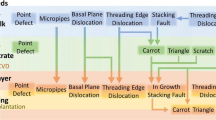Abstract
This paper covers the automation done to upgrade the reliability verification in the backend circuit design of microchips. Automation is done to upgrade the reduction of violations which occurs during the reliability verification flow by considering each branch or loop resistors and calculating the current through each resistor. It is also estimated that number of straps required particularly for via 3 and via 4 violations so that to reduce number of RV flow execution. Automation is extremely basic in enhancing the proficiency of plan and assembling phases of a VLSI product. This paper gives a flow, which enhances the efficiency of effective resistance thereby improves the proficiency of reliability verification. This reliability verification (RV) analysis flow, can be invoked post Routing of the plan and encourages the VLSI designers to recognize the adjustments in current design, that caused the signal scaling factors (SF)/self-heat violations from past one. This automation essentially decreases SF/self-heat in the circuit by reducing the resistance, in this way decreasing the back end configuration time.



(courtesy http://www.google.co.in)





(courtesy http://www.google.co.in)









Similar content being viewed by others
References
Nicollian PE, Hunter WR, Hu JC (2000) Experimental evidence for voltage driven breakdown models in ultra-thin gate oxides. In Proceedings of the IEEE international reliability physics symposium, San Jose, CA, pp 7–15,
Ogawa ET, Ki-Don Lee VA, Blaschke PS Ho (2002) Electromigration reliability issues in dual-damascene Cu interconnections. Proc IEEE Trans Reliab 51(4):403–419
Shinkai K, M Hashimoto, Onoye T (2007) Future prediction of self-heating in short intra-block wires. In: 8th international symposium on quality electronic design, pp 660–665
Suehle JH (2002) Ultrathin gate oxide reliability: physical models, statistics, and characterization. IEEE Trans Electron Devices 49(6):958–971
Yuan T, Ning TH (2013) Fundamentals of modern VLSI devices, 2nd edn. Cambridge University Press, Cambridge
Author information
Authors and Affiliations
Corresponding author
Rights and permissions
About this article
Cite this article
Imran, M.M.M., Shylashree, N. Effective resistance calculation and automated solution for fixing reliability verification violations. Microsyst Technol 24, 4817–4824 (2018). https://doi.org/10.1007/s00542-018-3886-2
Received:
Accepted:
Published:
Issue Date:
DOI: https://doi.org/10.1007/s00542-018-3886-2




